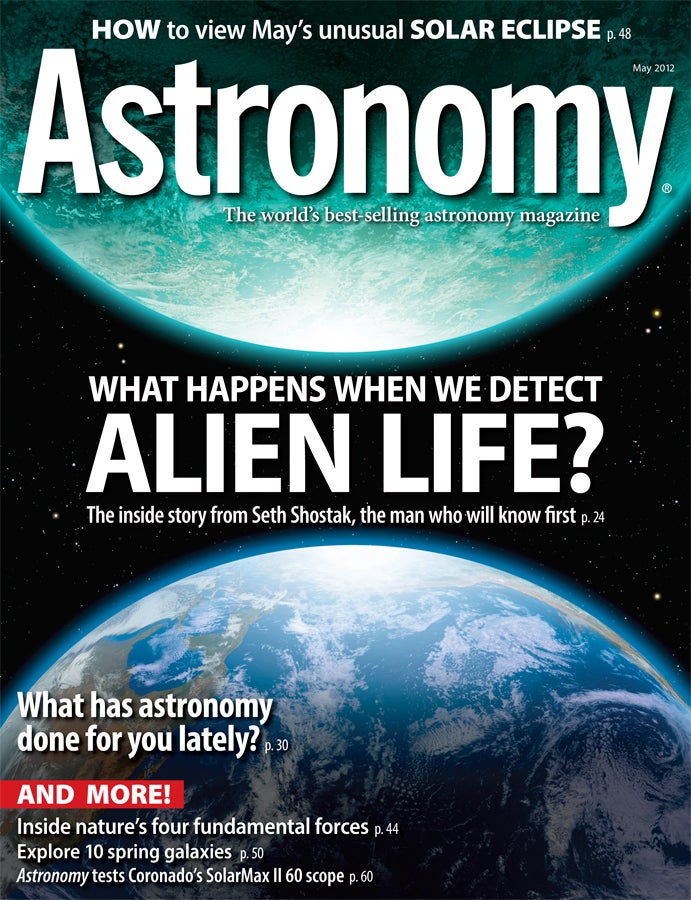
WAUKESHA, Wis. — Man’s belief in the possibility of intelligent life beyond Earth has existed for centuries. Once we realized no aliens lurked in the solar system, some scientists began the search for extraterrestrial intelligence (SETI) beyond our stellar neighborhood. In 1960, Frank Drake performed the first modern SETI experiment, looking for radio signals in the nearby universe, and today he is part of an entire institute dedicated to the search. As radio telescopes search the skies for a signal and as earthly technology advances, the chance of a positive detection of alien life increases. But what happens when we finally succeed?Seth Shostak, senior astronomer at the SETI Institute and likely the first person to know when such an event occurs, explores the answer in “What happens when we detect alien life?” It turns out that, while there is no policy of secrecy at SETI, detection protocols for scientists do exist, so we can learn how astronomers should respond. But the public’s reaction is a little more uncertain (although, as Shostak notes, 72 percent of Americans say they would feel “excited and hopeful” to learn about a signal), especially due to the plethora of new questions such a finding brings: What are the aliens saying? Are they peaceful? What does this mean for religions? Should we respond?There’s one question we will have an answer for, though, Shostak says: “We’ll at least know we’re neither the crown of creation nor even particularly exceptional.” In summary, we’re not alone.To learn more about SETI research and what kind of impact a detection could have on society, pick up the May issue of Astronomy, on newsstands April 3.
“What has astronomy done for you lately?”
As world economies struggle to grow and governments constantly in-fight over spending, many people have lost sight of the value of astronomy research. They wonder why NASA should receive billions of dollars to stare at distant galaxies when fellow Americans are facing real problems right here at home. But, as C. Renée James explains in “What has astronomy done for you lately?” such research — including the search for evaporating black holes and studies of the Sun — has more impact on our lives than we might think … even producing a new cancer treatment.
“View May’s unusual solar eclipse”
The first of three big Sun events in 2012 occurs May 20/21 when the Moon passes in front the Sun and produces an annular eclipse along a path from China’s southeastern coast to just southeast of Lubbock, Texas. But while many will witness the ring of sunlight present with annularity, there’s still something for the rest of the United States. As Senior Editor Richard Talcott notes in “View May’s unusual solar eclipse,” “Anyone with a clear sky who lives west of a line that runs from western Texas to the western Great Lakes and into Canada will witness the Moon take a significant bite from the solar disk.”
“How London created a big-city astro club”
Big cities like London, England, don’t provide the ideal backdrop for observing the night sky. But that doesn’t mean such urban locations can’t have success with astronomical societies, as one group attests. In “How London created a big-city astro club,” co-founder Simon Bennett explains how the Baker Street Irregular Astronomers brought the wonders of the cosmos to hundreds of people through lots of dedication, a little creativity, and a positive attitude. As Bennett writes, “Any astronomy is better than none.”
May sky events visible without optical aid
- May 5 — The Eta Aquarid meteor shower peaks before dawn.
- May 20/21 — An annular eclipse graces the sky along a narrow path that cuts across parts of China, Japan, and the southwestern United States.
- May 22 — Venus shines brilliantly 5° north of a waxing crescent Moon 30 minutes after sunset.
Also in the May 2012 Astronomy
- “Inside nature’s fundamental forces” — Gravity, electromagnetism, and the strong and weak nuclear forces control everything in the cosmos.
- “Explore 10 spring galaxies” — The northern constellation Canes Venatici abounds with star systems for amateur telescopes.
- “10 great spring binocular sights” — When the weather begins to warm, get your sky-fix by grabbing your binoculars.
- “Astronomy tests Coronado’s SolarMax II Telescope” — This compact Hydrogen-alpha scope will enhance your observing as solar maximum approaches.
- “The Sky this Month” — Exclusive star charts will guide you through May’s night sky.
- The May issue of Astronomy also includes Beautiful Universe, Astro News, Bob Berman’s Strange Universe, Glenn Chaple’s Observing Basics, Stephen James O’Meara’s Secret Sky, Tony Hallas’ Imaging the Cosmos, Ask Astro, Letters, Web Talk, Deep-sky Showcase, New Products, Reader Gallery, and The Cosmic Grid.









